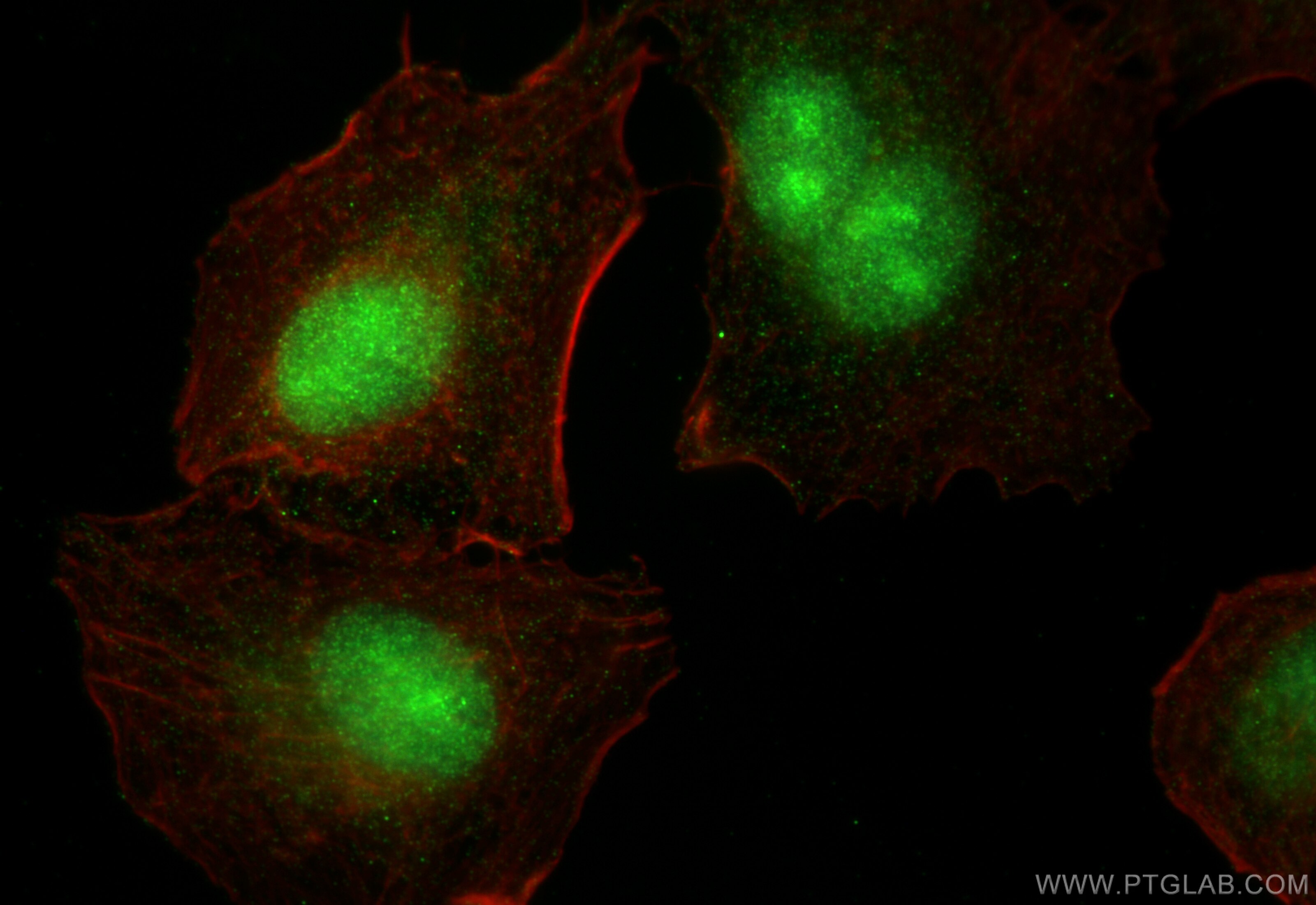Tested Applications
| Positive WB detected in | Jurkat cells, PC-3 cells, SH-SY5Y cells |
| Positive IF/ICC detected in | A549 cells |
Recommended dilution
| Application | Dilution |
|---|---|
| Western Blot (WB) | WB : 1:500-1:2000 |
| Immunofluorescence (IF)/ICC | IF/ICC : 1:50-1:500 |
| It is recommended that this reagent should be titrated in each testing system to obtain optimal results. | |
| Sample-dependent, Check data in validation data gallery. | |
Product Information
16551-1-AP targets GLI4 in WB, IF/ICC, ELISA applications and shows reactivity with human, mouse, rat samples.
| Tested Reactivity | human, mouse, rat |
| Host / Isotype | Rabbit / IgG |
| Class | Polyclonal |
| Type | Antibody |
| Immunogen | GLI4 fusion protein Ag9497 Predict reactive species |
| Full Name | GLI family zinc finger 4 |
| Calculated Molecular Weight | 376 aa, 41 kDa |
| Observed Molecular Weight | 40-45 kDa |
| GenBank Accession Number | BC014165 |
| Gene Symbol | GLI4 |
| Gene ID (NCBI) | 2738 |
| RRID | AB_2109716 |
| Conjugate | Unconjugated |
| Form | Liquid |
| Purification Method | Antigen affinity purification |
| UNIPROT ID | P10075 |
| Storage Buffer | PBS with 0.02% sodium azide and 50% glycerol , pH 7.3 |
| Storage Conditions | Store at -20°C. Stable for one year after shipment. Aliquoting is unnecessary for -20oC storage. 20ul sizes contain 0.1% BSA. |
Protocols
| Product Specific Protocols | |
|---|---|
| WB protocol for GLI4 antibody 16551-1-AP | Download protocol |
| IF protocol for GLI4 antibody 16551-1-AP | Download protocol |
| Standard Protocols | |
|---|---|
| Click here to view our Standard Protocols |
Reviews
The reviews below have been submitted by verified Proteintech customers who received an incentive for providing their feedback.
FH iru (Verified Customer) (12-14-2020) | It works at 1:500 O/N incubation.
|







